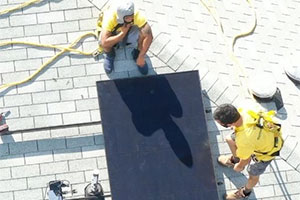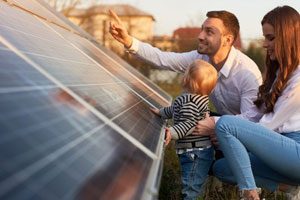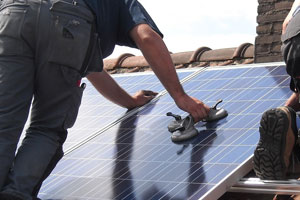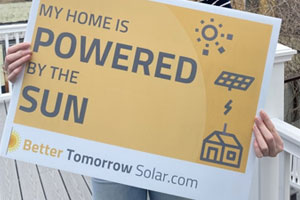How Does Solar Battery Storage Work?
More and more homeowners these days are embracing money-saving, eco-friendly solar panels. A typical residential solar array consists of photovoltaic (PV) panels and inverters. The solar panels harvest energy from the sun as direct current (DC) electricity, which the inverters convert to alternating current (AC) electricity for home use.
While some installations are independent of the grid, most remain grid-tied. This allows the flexibility to feed excess energy back to the utility company when the solar panels produce too much electricity. Homeowners can also draw from the grid for additional power when the panels don’t generate enough.
This arrangement significantly reduces electricity costs for homeowners with solar panels, and for many, that’s enough. However, grid-tied solar arrays are still vulnerable to power outages. The panels may continue to power the house during daylight hours, but after dark, the lights will go out just like everyone else’s.
That’s where solar battery storage comes in. Having a place to store excess electricity on-site decreases your reliance on the utility company, both during daily slowdowns in panel performance and in emergency situations like power outages. Of course, battery storage is a must if you plan to take your home off-grid.
With solar storage as part of your system, your home’s panels will charge the battery anytime they produce more electricity than you can consume in a given moment. Once the battery is fully charged, any additional energy feeds back to the utility.
Then, when the sun sets, your home begins to draw power from the battery. If you deplete the charge before the sun rises again, you can still get what you need from the utility. And if the power goes out, your solar battery will continue providing backup power to essential appliances and electronics for as long as possible. Homeowners can achieve whole home backup by adding multiple batteries.
Thanks to battery storage, solar adopters can maximize their investment and enjoy peace of mind, knowing that the power will stay on even if the electrical grid gets disrupted. Better Tomorrow Solar is proud to offer high-quality solar storage solutions to homeowners in Georgia. The brands we partner with include:
- Enphase: The Enphase Encharge energy storage system is comprised of the IQ battery, one of the world’s most advanced solar backup batteries. It utilizes lithium iron phosphate (LFP) chemistry for a safer, longer-lasting, more cost-effective solution.
- Generac: PWRcell, Generac’s revolutionary solar energy system, features the robust energy capacity you need to power your home while protecting the environment. With this scalable solution, you can always add more battery modules to facilitate your growing power needs.
- Tesla: The world’s premier electric car manufacturer also produces solar batteries. The Tesla Powerwall is a compact battery that uses LFP chemistry, along with an intuitive Smartphone app for futuristic control of your home’s energy needs.
Complete your solar installation with battery storage! This investment future-proofs your solar array and helps you get the most from your system. For more information or to request a free quote, please contact Better Tomorrow Solar.








